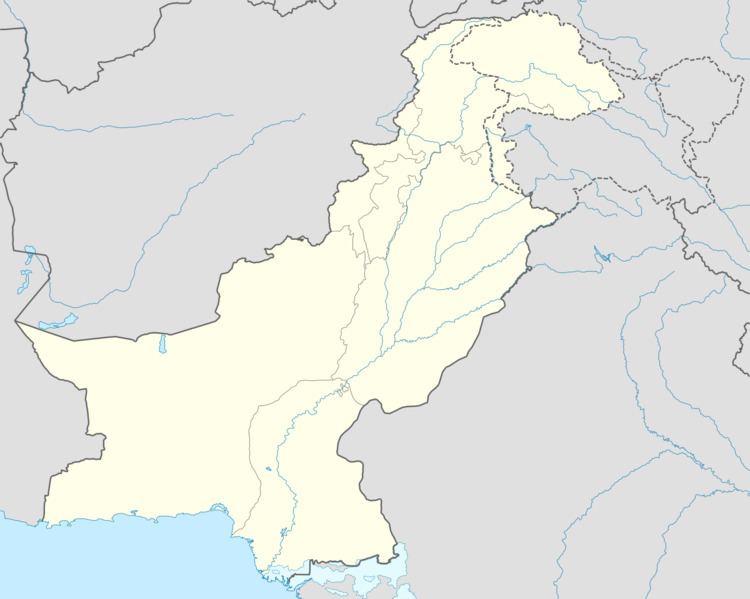Country Pakistan Local time Friday 9:15 PM | Time zone PKT (UTC+5) Province Khyber Pakhtunkhwa | |
 | ||
Weather 15°C, Wind NE at 0 km/h, 53% Humidity Neighborhoods Zor Bazar, Wapda Colony, Quaid Abad, Bagh Koorona, Mohallah Masood Khel, Tehsil Bazaar | ||
Sardaryab river in charsadda near peshawar beautiful place
Charsadda (Pashto: چارسده) is a town and headquarters of Charsadda District, in the Khyber Pakhtunkhwa province of Pakistan. It lies about 29 kilometres (18 mi) from the provincial capital of Peshawar at an altitude of 276 metres (906 ft) and . The total area of Charsadda District measures about 996 square Km. The district is geographically organized into two primary parts: Hashtnagar (Pashto: Ashnaghar) and Do Aaba (Pashto: Duava). The city hosts the ruins of what was once the ancient Gandharan capital city of Pushkalavati (meaning Lotus City in Sanskrit), and home of the Sanskrit grammarian Pāṇini.
Contents
- Sardaryab river in charsadda near peshawar beautiful place
- Map of Charsadda Pakistan
- Amir khan visits charsadda village in pakistan
- History
- Rivers
- Administration
- Population
- Recent history
- References
Map of Charsadda, Pakistan
Amir khan visits charsadda village in pakistan
History
The earliest archaeological deposits recovered at Charsadda are dated to ca. 1400 BCE, constituting a series of post holes in association with ceramic sherds and ash. Subsequent periods indicate that more permanent structures were built at Charsadda, including stone-lined pits. Between the 14th century BCE and the 6th century BCE, when an Achaemenid presence is represented at the site (see below), the inhabitants of Charsadda developed an iron-working industry and used ceramics that are typical for this period in the Vale of Peshawar, Swat and Dir.
The father of Sanskrit grammar, Pāṇini was from this area and lived around 4th century BCE.
The later history of Charsadda can be traced back to the 6th century BCE. It was the capital of Gandhara from the 6th century BCE to the 2nd century CE. The ancient name of Charsadda was Pushkalavati. It was the administrative centre of the Gandhara kingdom. Many invaders have ruled over this region during different times of history. These include the Persians, Alexander the Great's Greeks, the Mauryas, the Greco-Bactrians, the Indo-Greeks, the Indo-Scythians, the Indo-Parthians, the Kushans, the Huns, the Turks, the Guptas.
Charsadda is contiguous to the town of Prang; and these two places were identified by Alexander Cunningham with the ancient Pushkalāvati, capital of the region at the time of Alexander's invasion, and transliterated as Peukelaus or Peukelaotis by the Greek historians. Its chieftain (Astes), according to Arrian, was killed in defence of one of his strongholds after a prolonged siege by Hephaistion. Ptolemy fixes its site upon the eastern bank of the Suastene or Swat. In the seventh century CE Hiuen Tsiang visited the city, which he describes as being 100 li (16⅔ miles) north-east of Peshawar. A stupa, erected over the spot where Buddha made an alms-offering of his eyes, formed the great attraction for the Buddhist pilgrim and his co-religionists. The city, however, had even then been abandoned as a political capital in favour of Purushapura, Parashāwara, or Peshawar.
Rivers
There are three rivers flowing in Charsadda: the River Jindi, the Kabul River and the Swat River; these are the main source of irrigation for Charsadda. The three rivers then merge and join the Indus River.
Administration
The district is administratively subdivided into three tehsils which contained a total of 46 Union Councils:
Population
In Charsadda 60% population belongs to Muhammadzai tribe then they are divided into subtribes which are locally called "khel". But since the 1970s, migration from the FATA region (mainly Mohmand Agency) has occurred. Mainy sub tribes of the Mohmand, such as Halimzai and Tarakzai have moved into the northern region of Charsadda. This movement has further been aided by the sale of land by large land lords to the Mohmand Tribals. This has resulted in large population of mohmands in the north starting from the Umerzai region up to the town of Harichand, which borders the Malakand Agency.
Recent history
In January 2016, Bacha Khan University was attacked with guns and bombs, killing 21 people and injuring 17. Four suspected attackers died in the battle.
